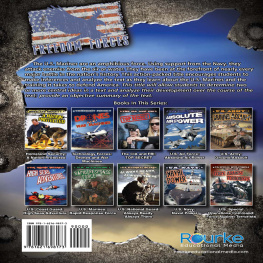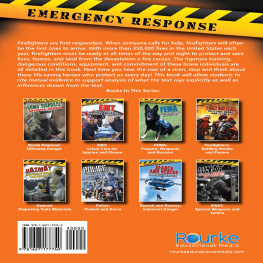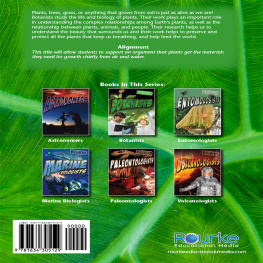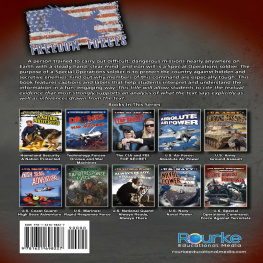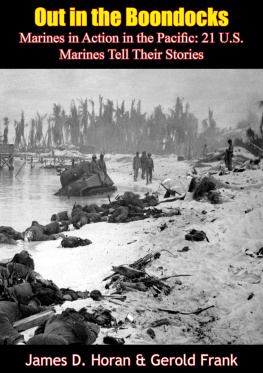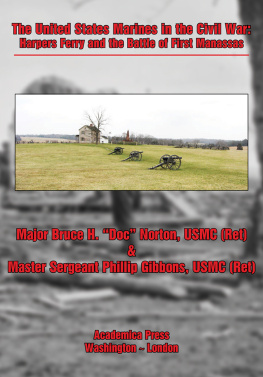Table of Contents
Guide
Level: U Word Count: 1,299 Words
100th Word: forces
Content Area Vocabulary:
Read the list. What do these words mean?
allies
amphibious
combat
conduct
enemy
hijacking
ranks
resources
tactics
terrorism
Building Background Knowledge
Before reading a book, it is important to tap into what your child or students already know about the topic. This will help them develop their vocabulary, increase their reading comprehension, and make connections across the curriculum.
| Look at the cover of the book.
What will this book be about? |
| What do you already know about the topic? |
| Lets study the Table of Contents.
What will you learn about in the books chapters? |
| What would you like to learn about this topic?
Do you think you might learn about it from this book? Why or why not? |
| Use a reading journal to write about your knowledge of this topic. Record what you already know about the topic and what you hope to learn about the topic. |
| Read the book. |
| In your reading journal, record what you learned about the topic and your response to the book. |
| Complete the activities at the end of the book. |

TABLE OF CONTENTS
2014 Rourke Educational Media LLC
All rights reserved. No part of this book may be reproduced or utilized in any form or by any means, electronic or mechanical including photocopying, recording, or by any information storage and retrieval system without permission in writing from the publisher.
www.rourkeeducationalmedia.com
PHOTO CREDITS: Cover photo: marines photo by Lance Cpl. Anne K. Henry, cover and title page metal border Eky Studio; back cover and title page: flag SFerdon; Pages 4/5 main photo marines.mil photographer: Lance Cpl. Pete Sanders, inset photo army.mil ; page 6 photos courtesy U.S. military photographers Gunnery Sergeant Demetrio Espinosa and Lt. Ken Shade; page 7 photos courtesy U.S. military, photo by EDDIE MCCROSSAN, courtesy U.S. Navy photo by Mass Communication Specialist Seaman Joseph Pol Sebastian Gocong, courtesy U.S. Marines photo by SGT Anthony Ortiz, courtesy U.S. Air Force photo by Senior Airman Gustavo Gonzalez, bottom photo Pfc. Lora Harter; page 8 photo by PFC Charlie Chavez; pages 9, 10, 11 courtesy US Marine Corps; pages 12/13 and 14 courtesy National Archives and Records Administration; page 15 National Archives and U.S. Military; pages 16/17 The Associated Press /Joe Rosenthal; page 17 courtesy U.S. Marines; Pages 18/19 courtesy U.S. Navy and U.S. Marines; page 20 courtesy National Archives and Records Administration; page 21 courtesy U.S. Marines; page 22 UpstateNYer; page 23 courtesy U.S. Marines, photo by Lance Cpl. Tyler Reiriz, map Pjasha; pages 24-26 courtesy U.S. Marines; page 27 portrait of John A. Lejeune courtesy U.S. Marines, plaque of John A. Lejeune Leonard J. DeFrancisci; page 28 courtesy National Archives and Records Administration; page 29 courtesy U.S. Marines
Edited by Precious McKenzie
Designed and Produced by Blue Door Publishing, FL
Library of Congress Cataloging-in-Publication Data
Greve. Tom.
U.S. Marines: Rapid Response Force / Tom Greve
p. cm. -- (Freedom Forces)
ISBN 978-1-62169-922-4 (hard cover) (alk. paper)
ISBN 978-1-62169-817-3 (soft cover)
ISBN 978-1-62717-026-0 (e-book)
Library of Congress Control Number: 2013938874
Rourke Educational Media
Printed in the United States of America,
North Mankato, Minnesota


rourkeeducationalmedia.com
PO Box 643328 Vero Beach, Florida 32964
CHAPTER ONE
FIRST TO FIGHT
Flinching from the wind and sand raking his eyes, a Marine crouches low behind an embankment. Clutching his weapon, he waits for a signal from his fellow Marine.
As enemy fire pierces the ridge behind them, a grenade blast gives them a moment to advance. Quickly, but without panic, the Marines pounce forward, pushing ever closer to the enemy until that enemy is in retreat, or eliminated with deadly force.
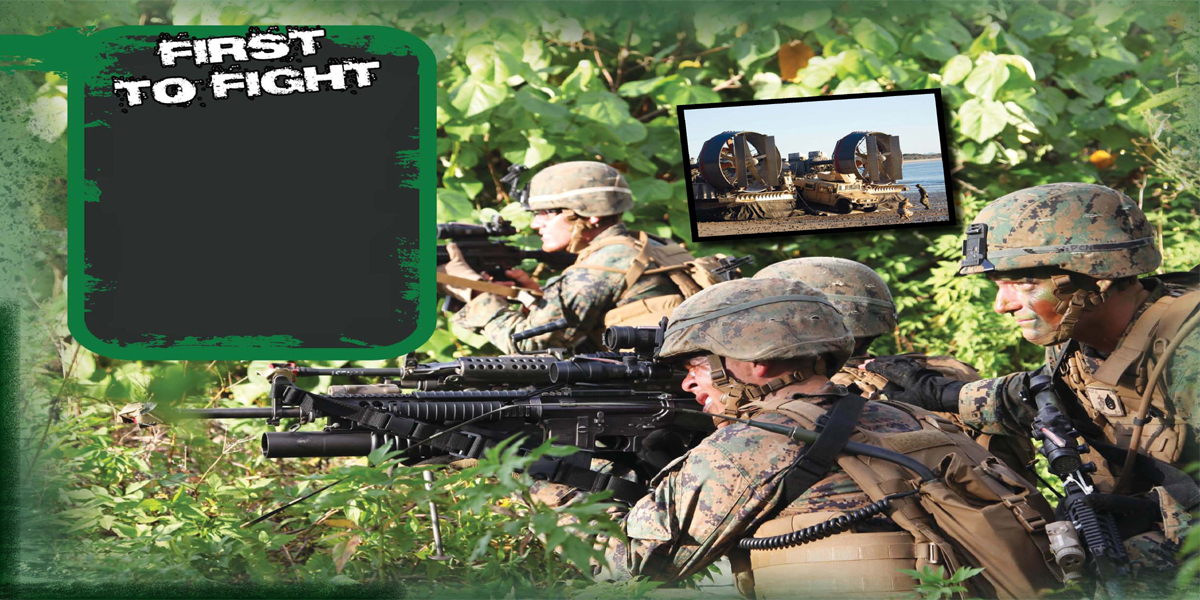
U.S. Marines are an amphibious force, meaning they can attack by land or sea. They have been at the forefront of nearly every major battle in the nations history.
The United States has the worlds largest military force. The Army, Navy, Air Force, Marines, Coast Guard, and Central Intelligence Agency all play roles in defending the country against forces that would aim to harm the nation, its people, or its resources.
The Marine Corps is the smallest of the four major combat service branches. The Corps operates in tandem with the U.S. Navy, although the two have different roles in defending the U.S.
Basic Roles of U.S. Military Branches in Combat
Army: Ground combat operations. Maintenance and support of land-based weapons.
Air Force: Air combat operations. Maintenance and support of military planes and helicopters.
Navy: Combat operations at sea. Maintenance and support of sea-going vessels and weapons, such as ships and submarines.
Marines: Amphibious combat force. Using support from the Navy, attack enemy from the air or water. Establish operation for advancing combat on land.
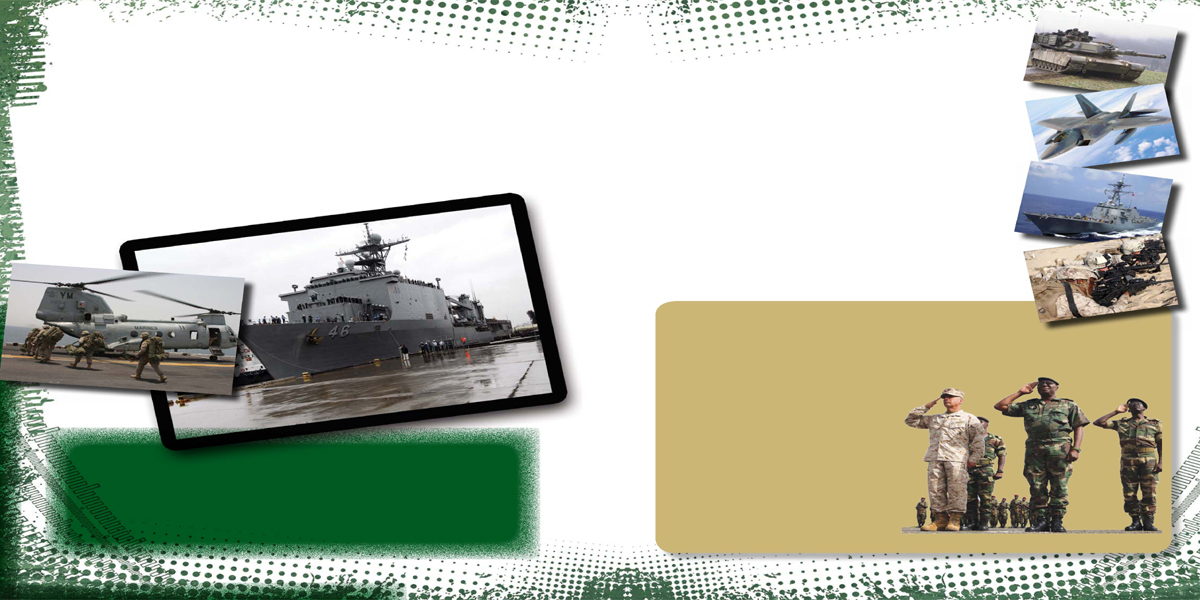
Americas 9-1-1 Force.
Like a person calling 9-1-1 in an emergency, so too does the U.S. government call on the Marines. Smaller in number than the Army, Navy, or Air Force, the Marines are the most rapid responders of all the military branches. With transportation support from the Navy, the Marine Corps prides itself on being able to respond to any crisis on Earth within 6 hours.
FREEDOM FACT
The U.S. Marine Corps lives by the motto Semper Fi, Latin for always faithful.
The Corps relies on a specific chain of command to streamline nearly everything it does. There is little tolerance for individual or selfish action. All members operate according to a code of conduct. This means Marines follow orders from superiors without question. Marines operate this way in peacetime as well as during times of war.
Marines are an especially tough, multi-skilled fighting force within the U.S. military. Marine Boot Camp is the toughest basic training program of the major military branches. Marine recruits have to be able to swim, as well as demonstrate strength and endurance. They also have to learn and memorize a great deal of information quickly. As part of a rapid response amphibious force, Marines must be fit and ready for action at all times.

